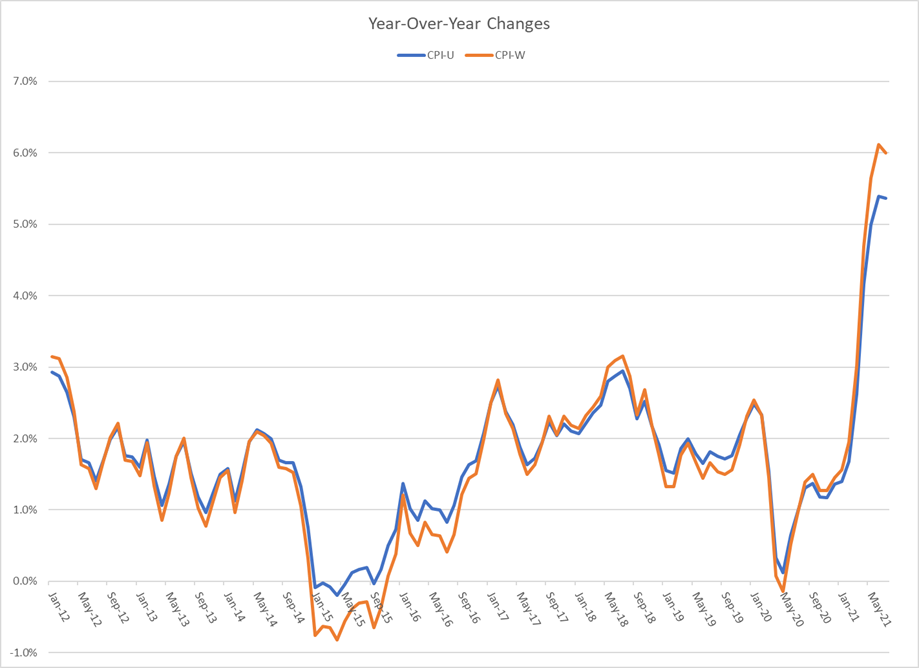As concerns about inflation increase, America’s working poor are finding it harder and harder to meet their everyday needs…
On August 11, the Bureau of Labor Statistics (BLS) announced that the Consumer Price Index – a measure of prices for various consumer goods and services – increased 0.5% in July and that it increased 5.4% over the past 12 months.
The price index that most people talk about when discussing inflation is the “Consumer Price Index for All Urban Consumers” (CPI-U). There are two very important words in that title: “All” and “Urban”.
“Urban” means exactly what it says, it is the prices paid by people in urban areas. That means the CPI-U does not apply to the 19% of the populace living in non-urban areas (otherwise known as “rural”).
“All” means all people. Retired, highly paid financiers, and people working as a clerk in a grocery store.
This is where a different measure of consumer prices comes in, CPI-W where the “W” means “urban wage earners and clerical workers”.
Once again, we have that word “urban”. Just as with CPI-U, CPI-W also does not apply to rural communities. What about the term “wage earners and clerical workers”?
The concept is to separate out people in lower paying occupations. The spending habits of urban wage earners are different from those of all urban consumers. That means price changes of certain items, especially food and energy, are more likely to affect them.
As can be seen on this chart, CPI-U and CPI-W track closely. But there are periods where a gap becomes apparent. 2015 has a noticeable gap, CPI-U was higher than CPI-W. Now fast-forward to this year. A gap again is appearing, only this time it is CPI-W that is outpacing CPI-U.

Why Does This Matter?
It matters that the working poor are getting hit much harder by these recent price increases. The people who already are struggling, who perhaps can’t demand a raise or just quit and move 1,000 miles away, are finding it harder and harder to meet their everyday needs. This is why these recent price surges are so troubling, and why it is so important to keep them under control.
There have been many articles written about inflation worries. However, recent focus on CPI-U in the media has ignored how surging inflation is particularly troubling to those who have limited resources to deal with it. We haven’t addressed the fact that it doesn’t even apply to almost one-fifth of the country.
It is important for the media and policy makers to understand the difficult nuances of this complex data to help tell the whole story in order to help build a more equitable future for America. Translating the nuances of complex data into simple English is one of the things StateBook does best.
To learn more details about your reguion, please contact data@statebook.com. And feel free to explore example StateBook data collected and visualized for every location across the U.S. in our interactive Calypso API.
